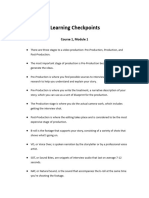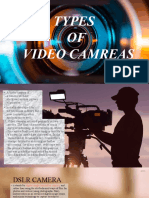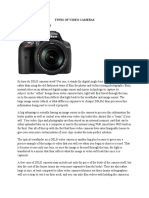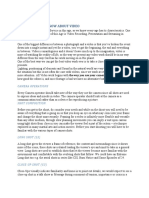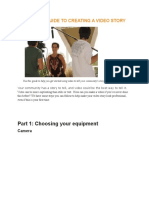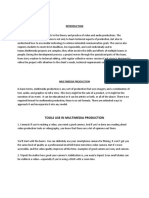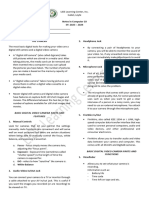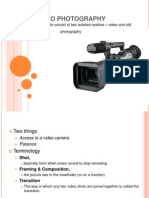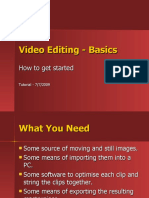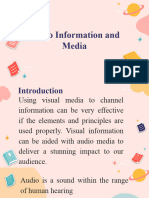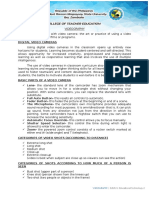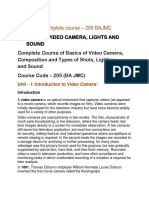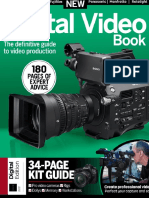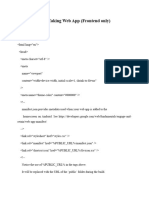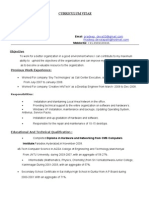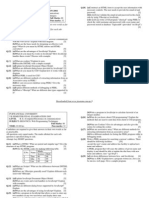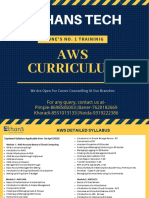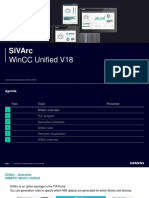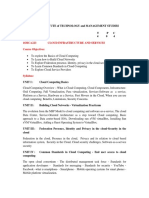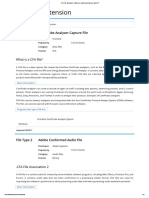Mastering Video Recording
A Comprehensive Guide for
Beginners
1
�Table of Contents
1. Introduction
2. Understanding Video Recording
- 2.1 The Basics of Video Recording
- 2.2 Different Types of Video Recording Devices
- 2.3 Components of Video Recording
3. Choosing the Right Equipment
- 3.1 Cameras
- 3.2 Microphones
- 3.3 Lighting Equipment
- 3.4 Tripods and Stabilization
- 3.5 Editing Software
4. Tips for Successful Video Recording
- 4.1 Planning Your Shots
- 4.2 Conducting Interviews
- 4.3 Recording Events
- 4.4 Dealing with Common Recording Issues
5. Post-Production and Editing
- 5.1 Introduction to Video Editing
- 5.2 Editing Software Overview
- 5.3 Basic Editing Techniques
- 5.4 Adding Effects and Transitions
- 5.5 Exporting Your Final Video
6. Conclusion: Your Journey to Mastering Video Recording
2
�CHAPTER 1 INTRODUCTION
Thank you for visiting "Mastering Video Recording: A Comprehensive Guide for
Beginners." We'll establish the groundwork for your video recording adventure in this
chapter. This guide is intended to serve as your companion while you learn the ins and outs of
the art and science of filmmaking, regardless of your level of experience.
Why Video Recording Matters
Video has emerged as one of the most effective media for narrative, entertainment, and
communication in the current digital era. There is a growing need for high-quality video
material, from social media sharing of personal experiences to professional content creation
for corporations. Whether you want to chronicle life's special moments or pursue a profession
in videography, there are a plethora of opportunities when you learn how to film videos well.
Chapter 2: Understanding Video Recording
In this chapter, we'll dive into the fundamentals of video recording. Whether you're using a
smartphone, a professional camera, or a webcam, understanding the basics is essential for
creating high-quality videos.
2.1 The Basics of Video Recording
Video Resolution: The quantity of pixels that make up each frame in your movie is referred
to as its resolution. 720p (1280x720 pixels), 1080p (1920x1080 pixels), and 4K (3840x2160
3
�pixels) are common resolutions. Videos with a higher resolution will be crisper and more
defined, but they will also take up more processing power and storage.
Frame Rate: The number of individual frames displayed in your movie each second is
determined by its frame rate. Most movies have a set frame rate of 24, 30, or 60 frames per
second (fps). Lower frame rates give a more cinematic impression, while higher frame rates
produce smoother motion—perfect for action-packed situations.
Codec: Video files can be compressed and decompressed using a codec, which is short for
compressor-decompressor. Codecs can be hardware or software tools. MPEG-4, H.265 and
H.264 are common codecs. The file size and video quality are impacted by the codec
selection.
Bitrate: The term "bitrate" describes how much data a video file processes in a second.
Larger file sizes are produced by higher bitrates, which maintain more detail. Reduced
bitrates, which are perfect for online streaming, give up some quality in favor of reduced file
sizes.
2.2 Different Types of Video Recording Devices
Cameras:
- Smartphones: Modern smartphones include sophisticated cameras and algorithms that
allow them to shoot high-quality videos. They are well-liked for vlogging and informal
recording because of their mobility and ease.
4
�- DSLR and Mirrorless Cameras: Professionals and hobbyists alike choose these cameras
because of their manual settings, interchangeable lenses, and excellent image quality. They
are excellent for taking sharp pictures and dramatic video.
- Webcams: Webcams are little cameras that plug into your computer and are frequently used
for live streaming and video conferences. They might not be as high-quality as specialized
cameras, but they are still useful for online communication..
Action Cameras: GoPro and other action cameras are made to record extreme sports and
experiences. They have wide-angle lenses for immersive video, are waterproof, and are
robust.
5
�Drones: Aerial videography has been transformed by drones fitted with cameras. They are
able to take dynamic images and breathtaking aerial vistas that were before unattainable or
challenging.
2.3 Components of Video Recording
Lens: The quality of your film is greatly influenced by the lens of your camera. Apertures,
focal lengths, and optical properties differ between lenses. While telephoto lenses bring far-
off things closer, wide-angle lenses capture broad panoramas.
Sensor: The sensor, which transforms light into digital data, serves as the camera's "eye".
Deep field control and low-light performance are typically improved by larger sensors.
Microphone: Video recording requires similar attention to audio quality. Although cameras'
built-in microphones can record background noise, additional microphones are advised for
crystal-clear audio. Lavalier microphones allow for hands-free recording, studio microphones
are ideal for controlled conditions, while shotgun microphones are used for directed sound.
Recording Media: Usually, video is stored internally or on memory cards or solid state
drives, or SSDs. The recording medium selection is contingent upon the required storage
capacity and compatibility of the camera.
Viewfinder/Screen: You can construct your photographs and keep an eye on what the camera
is filming using the viewfinder or screen. Although LCD panels offer a live picture,
electronic viewfinders (EVFs) display a digital preview of the scene.
Settings and Controls: Many options and settings are available on cameras to let you
personalize your recording experience. These include of focus modes, white balance,
exposure settings (aperture, shutter speed, ISO), and photo profiles for tone and color
adjustments.
6
�Knowing these elements and how they work while taking videos will enable you to select the
tools and settings that will produce the results you want. The first step to making amazing
movies is to get the hang of these fundamentals, whether your goal is to achieve smooth
action, clean audio, or dramatic footage.
Chapter 3: Choosing the Right Equipment
Selecting the right equipment is crucial for achieving professional-looking videos. In this
chapter, we'll explore the various components of a video recording setup and provide insights
into choosing the best tools for your needs and budget.
3.1 Cameras
Smartphones:
- Pros: Contemporary smartphones are furnished with sophisticated cameras that can capture
movies in high definition (HD) and even 4K resolution. They are lightweight, portable, and
perfect for vlogging, social networking material, and informal filming.
7
�- Cons: Although convenient, cellphones might not have the manual settings and variety of
specialized cameras. They might not have replaceable lenses, and they can have trouble in
dim light.
DSLR and Mirrorless Cameras:
- Pros: Mirrorless and DSLR (Digital Single-Lens Reflex) cameras are well-liked options for
both hobbyists and pros. They come with manual controls for exact settings, interchangeable
lenses, and excellent image quality.
- Cons: The cost of these cameras may exceed that of smartphones, and there could be a
greater learning curve involved in becoming proficient with their settings and functionalities.
Although they are bigger than smartphones, they provide unparalleled personalization and
versatility.
Action Cameras (e.g., GoPro):
- Pros: Rugged and small, action cameras are made to record daring actions. They have wide-
angle lenses for immersive video, and they are shockproof and waterproof.
- Cons: Action cameras are fantastic for action photos, but they might not perform as well in
low light or generate images with as high a quality as bigger cameras. They have fixed lenses
as well.
Camcorders:
- Pros: Dedicated video cameras with long zoom ranges and ease of use are called
camcorders. They are simple for novices to use because they are made especially for filming
videos.
- Cons: Compared to DSLR and mirrorless cameras, camcorders may be less versatile
because to their smaller sensors and fixed lenses. They might not provide as much
configuration flexibility.
3.2 Microphones
Built-in Microphones:
- Pros: Most cameras, including smartphones and camcorders, come with built-in
microphones for recording audio.
- Cons: Particularly in busy settings, built-in microphones may not provide the finest audio
quality and may pick up background noise.
External Microphones:
- Shotgun Microphones: These directional microphones capture sound from a specific
direction, ideal for isolating the subject's voice and reducing background noise.
8
�- Lavalier Microphones: These tiny clip-on microphones, also referred to as "lav" mics,
attach to garments. They allow for hands-free recording and are frequently utilized in
presentations and interviews.
- Studio Microphones: Designed for controlled environments, studio microphones offer
superior audio quality but are less portable than shotgun or lav mics.
9
�3.3 Lighting Equipment
Natural Light:
- Pros: Videos may benefit greatly from the lovely, subtle lighting that natural light can
produce, especially during the optimal times of day—sunrise and sunset.
- Cons: Throughout the day, natural light can fluctuate and is not always consistent.
Depending on the situation and time of day, it may also be harsh or inadequate.
Artificial Lighting:
- LED Panels: LED lights have an adjustable brightness and color temperature, are energy-
efficient, and are very adaptable. They are well-liked for lighting setups that are constant and
for interior photography.
- Softboxes: Softboxes distribute light to lessen sharp shadows and produce a soft, pleasing
glow. They are frequently employed in the creation of videos and portrait photography.
- Ring Lights: Ring lights provide even, circular illumination ideal for close-up shots, beauty
videos, and interviews. They create a distinctive "halo" effect in the eyes.
3.4 Tripods and Stabilization
Tripods:
- Benefits: In particular, tripods offer stability and help to avoid shaky film while taking
static images or utilizing telephoto lenses.
- Types: There are various types of tripods, including traditional tripods with adjustable legs,
mini tripods for portability, and flexible tripods with bendable legs.
- Features: Look for tripods with features like quick-release plates, adjustable height, and
sturdy build quality.
Gimbals and Stabilizers:
- Benefits: Smooth, cinematic video requires the use of gimbals and stabilizers, particularly
when filming handheld or in motion.
- Types: For strolling shots or vlogging, handheld gimbals are convenient and lightweight.
Professional productions tend to employ larger stabilizers, such Steadicams.
- Features: Consider features like 3-axis stabilization, follow modes, and compatibility with
your camera weight.
10
�3.5 Editing Software
Free and Basic Editing Software:
- Examples: Windows Movie Maker (for Windows), iMovie (for macOS), and Shotcut
(cross-platform).
- Features: These programs offer basic editing tools such as cutting, trimming, adding
transitions, and simple effects.
Advanced Editing Software:
- Examples: Adobe Premiere Pro, Final Cut Pro, DaVinci Resolve.
- Features: A vast array of capabilities for complex transitions, color correction, audio
mixing, and special effects are available in advanced editing software. When it comes to
professional video production, they are the norm..
11
�Conclusion
Selecting the appropriate gear is an important stage in the process of making videos. When
picking out cameras, microphones, lighting, tripods, and editing software, take your needs,
your budget, and the kind of material you want to produce into consideration. Always keep in
mind that the greatest equipment is the one that enables you to get the outcomes you want,
whether that's clear audio, gorgeous images, or fluid, cinematic video. Knowing the
advantages and disadvantages of the various solutions will prepare you to start your video
recording trip with assurance.
Chapter 4: Tips for Successful Video Recording
We'll look at useful advice and techniques in this chapter to help you get over typical
obstacles and succeed in your video recording projects. These pointers can improve the
caliber of your films whether you're making a narrative film, documenting an event,
interviewing people, or shooting a vlog.
4.1 Planning Your Shots
Storyboarding: Storyboarding a video may assist envision the shooting order for written tales
or films. It guarantees that you get all the scenes and viewpoints required for a well-rounded
narrative.
Shot List: Make a list of the specific shots you need before filming. This ensures you don't
miss any essential footage and helps streamline the shooting process.
Location Scouting: If you are filming on location, go to the place in advance to get a feel for
the setting. For creative photos, take note of the lighting, any potential impediments, and
noteworthy details.
4.2 Conducting Interviews
Prepare Questions: Make a list of questions ahead of time if you're doing interviews. This
makes sure you cover all the important ground and helps steer the discourse.
Use a Lavalier Microphone: For interviewees, use a lavalier microphone for clear audio.
Clip it close to the subject's mouth for optimal sound quality.
Eye-Level Shots: Keep the camera level with the subject when conducting interviews. This
produces a viewpoint that is interesting and natural.
4.3 Recording Events
Capture B-Roll: When recording events, don't forget to get lots of B-roll video. B-roll
consists of extra images of the location, audience responses, and narrative-enhancing
elements.
12
�Stay Mobile: Things might change quickly, so be ready to wander about and take pictures
from various viewpoints. A gimbal or stabilizer can be used to achieve stable, fluid shots.
Anticipate Moments: Familiarize yourself with the event schedule to anticipate key
moments. This allows you to be in the right place at the right time for important shots.
4.4 Dealing with Common Recording Issues
Handling Low Light:
- Increase ISO: To make the sensor more light-sensitive in low-light conditions, raise the ISO
setting on the camera. But be careful while adding sound.
- Use Extra Lighting: To brighten the environment, bring portable LED lights or make use of
existing light sources.
- Wide Aperture: To let in more light, if your camera permits, use a lens with a wide aperture
(low f-stop number).
Managing Shaky Footage:
- Tripods and Stabilizers: For still photographs, a tripod is a must. Use a stabilizer or gimbal
for moving shots to lessen camera shaking.
- Post-Stabilization: During post-production, a lot of editing software packages provide
options for stabilizing shaky video.
Ensuring Clean Audio:
- External Microphones: For crystal-clear audio, spend your money on a good external
microphone. Lav microphones and shotgun microphones are great options for many
recording situations.
- Monitor Levels: During recording, pay attention to the audio levels. By adjusting the levels
appropriately, you may prevent peaking, or audio distortion.
- Reduce Ambient Noise: When recording, pick calm areas and direct the microphone such
that the subject's voice is the main emphasis.
Conclusion
Effective video recording requires both technical proficiency and artistic vision. You can
make engaging films by organizing your shots, conducting interviews skillfully, capturing
events in a dynamic way, and taking care of typical recording problems. Remain adaptable,
adjust to various circumstances, and always work to enhance your recording methods. Your
films will enthrall and interest your viewers and make a lasting impression if you rehearse
and pay attention to detail.
13
�Chapter 5: Post-Production and Editing
Post-production and editing are where raw footage transforms into polished, engaging videos.
In this chapter, we'll explore the essential steps and techniques for editing your videos to
perfection.
5.1 Introduction to Video Editing
Importing Footage: After recording, transfer your video files to your computer or editing
software. Most editing programs allow you to import footage directly from your camera or
storage device.
Organizing Clips: Organize your footage into folders or bins based on scenes, interviews, B-
roll, etc. This makes it easier to locate specific clips during the editing process.
Understanding the Timeline: You organize and edit your video segments on the timeline.
There are several tracks for effects, audio, and video in it. Every clip is denoted by a block
known as a "clip item."
5.2 Editing Software Overview
Popular Editing Software:
- Adobe Premiere Pro: Industry-standard software with a wide range of features for
advanced editing, effects, and color grading.
- Final Cut Pro (for macOS): Apple's professional editing software known for its intuitive
interface and powerful tools.
- DaVinci Resolve: A powerful and free editing software with professional-grade features,
including color correction and audio editing.
Basic Editing Tools:
- Cut and Trim: Remove unwanted sections of clips by cutting and trimming. Use the razor
tool to split clips.
- Transitions: Add transitions between clips for smooth scene changes. Common transitions
include cuts, fades, and dissolves.
- Text and Titles: Overlay text and titles to introduce scenes, identify speakers, or add
context.
- Audio Editing: Adjust audio levels, add music or sound effects, and create a balanced audio
mix.
5.3 Basic Editing Techniques
14
�Cutting on Action: In order to preserve coherence and fluidity while editing action scenes or
interviews, cut on the action. This entails cutting during motions or gestures as opposed to
still, motionless times.
J-Cuts and L-Cuts: J-cuts provide a seamless audio transition by starting the audio of the
subsequent clip before the video transition. In contrast, an L-cut is when the audio from one
clip carries over into the next.
Adding B-Roll: Incorporate B-roll footage to enhance storytelling and provide visual context.
B-roll can cover transitions, emphasize points in interviews, or add visual interest.
Color Correction and Grading: To get a consistent image, make adjustments to the colors
and tones in your film. While color grading styles the film to a certain mood or style, color
correction fixes exposure and white balance problems.
5.4 Adding Effects and Transitions
Effects Library: Most editing software includes a library of effects and presets. Experiment
with effects such as blur, sharpen, and stylize to enhance your footage.
Transitions: Choose transitions that suit your video's style. Common transitions include cuts,
fades, wipes, and zooms. Avoid overusing flashy transitions, as they can distract from the
content.
Keyframes: Keyframes allow you to create animation and movement within your video. Use
keyframes to adjust elements such as scale, position, and opacity over time.
5.5 Exporting Your Final Video
Resolution and Format: Choose the right format and resolution for your finished video. A
few popular formats include AVI, MOV, and MP4. Select a resolution (1080p on YouTube,
for example) based on the platform you plan to watch it on.
Bitrate and Compression: Balancing quality and file size, adjust the bitrate and compression
settings. Higher bitrates preserve more detail but result in larger file sizes.
Naming and Metadata: Give your video a descriptive name and add relevant metadata, such
as tags and descriptions. This helps with organization and searchability when uploading to
online platforms.
Your vision is realized in post-production and editing. You may turn unpolished footage into
a polished and captivating video by becoming proficient with the tools and methods of video
editing software. Throughout your edit, don't forget to keep color, audio levels, and tempo
constant. You can create engaging films that effectively communicate your message to your
audience with practice and ingenuity. To make videos that have an impact, explore the realm
of post-production, try out various editing techniques, and let your imagination run wild.
6. Conclusion: Your Journey to Mastering Video Recording
15
�Congratulations for finishing "Mastering Video Recording: A Comprehensive Guide for
Beginners." You've taken a voyage into the fascinating realm of videography with this
tutorial, discovering the necessary methods, resources, and approaches to produce visually
striking movies. Let us consider your trip thus far and the road ahead as we close off this
chapter.
Your Accomplishments
- Understanding the Basics: You've gained a solid understanding of video recording
fundamentals, including resolution, frame rate, codecs, and the components of a video
recording setup.
- Choosing the Right Equipment: Armed with knowledge about cameras, microphones,
lighting equipment, tripods, and editing software, you're ready to select the best tools for your
needs and budget.
- Tips for Successful Video Recording: Whether planning shots, conducting interviews,
recording events, or overcoming common recording issues, you now have practical tips to
ensure successful video shoots.
- Post-Production and Editing: You have become familiar with the basics of video editing,
including importing footage, applying effects and transitions, and exporting your finished
product. You may turn unfinished material into polished, interesting videos by using this
expertise.
Your Next Steps
As you continue your journey to mastering video recording, here are some steps to consider:
- Practice, Practice, Practice: The key to improvement is practice. Keep recording videos,
experimenting with different techniques, and analyzing your results.
- Expand Your Knowledge: Stay updated with the latest trends, tools, and techniques in
video recording. Attend workshops, watch tutorials, and read articles to continue learning.
- Collaborate and Network: Collaborate with other creatives, filmmakers, or content creators.
Networking opens doors to new opportunities and allows you to learn from others'
experiences.
- Refine Your Style: Every filmmaker and videographer has a unique style. Experiment with
different editing styles, camera angles, and storytelling techniques to develop your signature
style.
- Seek Feedback: Share your videos with friends, peers, or online communities. Constructive
feedback helps you identify areas for improvement and grow as a videographer.
Embracing Creativity
16
�More than simply technical know-how, video recording involves narrative, creativity, and
seizing moments that connect with your audience. Make sure your films are passionate and
creative, whether you are giving knowledge, chronicling life's adventures, or telling gripping
tales.
Your Impact
Each video you make has the power to educate, uplift, amuse, or stir up strong feelings in
viewers. Your films have the power to impact viewers' lives, regardless of whether you're
making them for business projects, social media platforms, or your own entertainment.
Final Thoughts
As we get to the end of this tutorial, keep in mind that being an expert video recorder requires
constant study, experimentation, and innovation. Your activities, whether you're a hobbyist,
an aspiring filmmaker, or a content provider, will be well-founded by the skills and
information you've acquired.
Now grab your camera, arrange your lighting, and unleash your inner artist. Continue
expanding the possibilities of video recording while capturing the important moments and
telling compelling stories.
We appreciate you coming along for the ride. We hope that your upcoming efforts to record
videos turn out well. Have fun with the video!
17








